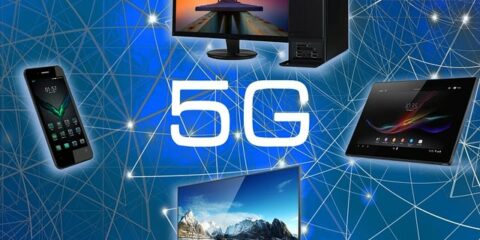One: Mobile Internet Mobile Internet refers to Internet access services provided through the wireless communication network so that users can use various mobile terminal devices (such as smartphones, tablet computers, notebook computers, etc.) to obtain information, communication, entertainment, and other activities. The support of 5G technology for mobile Internet is mainly reflected in the following aspects: Provide high speed, low latency, large capacity mobile broadband services, providing users with more extreme application experience, such as ultra HD video, virtual reality, augmented reality, etc. Provide higher spectrum efficiency and frequency reuse efficiency, use the full spectrum access and ultra-dense networking technology, and make full use of low-frequency and high-frequency resources, to meet the extremely high traffic density requirements of the network. Provide more flexible network architecture and resource management, based on software-defined network (SDN) and network function virtualization (NFV) technology, to achieve software and cloud network functions, and improve the efficiency and flexibility of network deployment and operation.
Two: the Internet of Things The Internet of Things refers to the connection of various physical devices (such as sensors, controllers, cameras, etc.) through wireless communication networks to realize information exchange and collaboration between devices and realize intelligent management and control. The support of 5G technology for the Internet of Things is mainly reflected in the following aspects: Providing massive equipment connection capacity, using new multiple access technology to realize the superposition transmission of multi-user information, multiplying the equipment connection capacity of the system, and meet the connection density requirements of millions per square kilometer. Provide ultra-reliable and low-delay communication services, using large-scale antenna array and flexible duplex technology to realize ultra-reliable and low-delay communication, meet the special application needs of vertical industries such as Internet of Vehicles and industrial control, and provide users with millisecond end-to-end delay and nearly 100% service reliability guarantee. Provide ultra-low power consumption and ultra-low-cost terminal equipment, and use new multi-carrier technologies such as F-OFFDM and FBMC to realize flexible use of fragmentation spectrum, support the narrow band and small data packets, reduce power consumption and cost, and use terminal direct communication (D2D) technology to realize direct communication between terminals, avoid long-distance transmission between the base station and terminal, and reduce power consumption.
Three: industrial field refers to the realization of data acquisition, monitoring, control, optimization, and other functions in the industrial production process through the wireless communication network, so as to improve production efficiency and quality, and reduce costs and risks. The support of 5G technology for the industrial field is mainly reflected in the following aspects: Providing ultra-high reliable low delay communication services, using large antenna array and flexible duplex technology, realizing ultra-high reliable low delay communication, meeting the industrial control, remote medical, automatic driving to delay and reliability has extremely high requirement of vertical industry application demand, to provide users with millisecond end-to-end delay and nearly 100% of the business reliability guarantee. Provide more flexible network architecture and resource management, based on software-defined network (SDN) and network function virtualization (NFV) technology, to achieve software and cloud network functions, and improve the efficiency and flexibility of network deployment and operation. Provide higher network security and privacy protection, use network coding, polarization code, and other technologies to achieve higher data transmission security, prevent data theft or tampering; use terminal direct (D2D) technology to realize direct communication between terminals, avoid data transfer through a base station or cloud, reduce the risk of data leakage.







